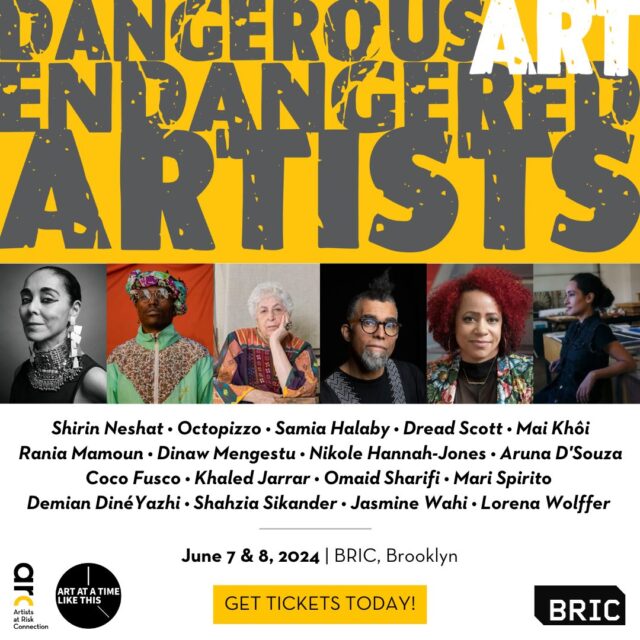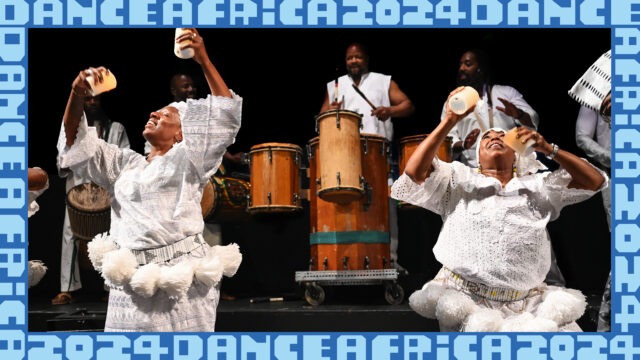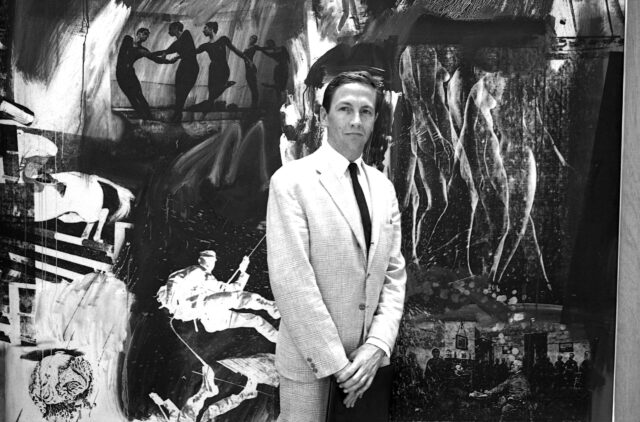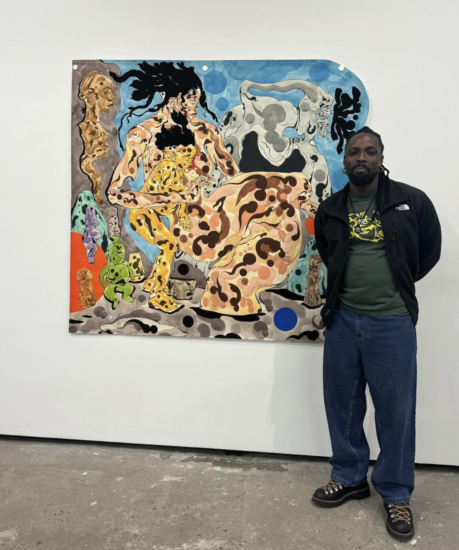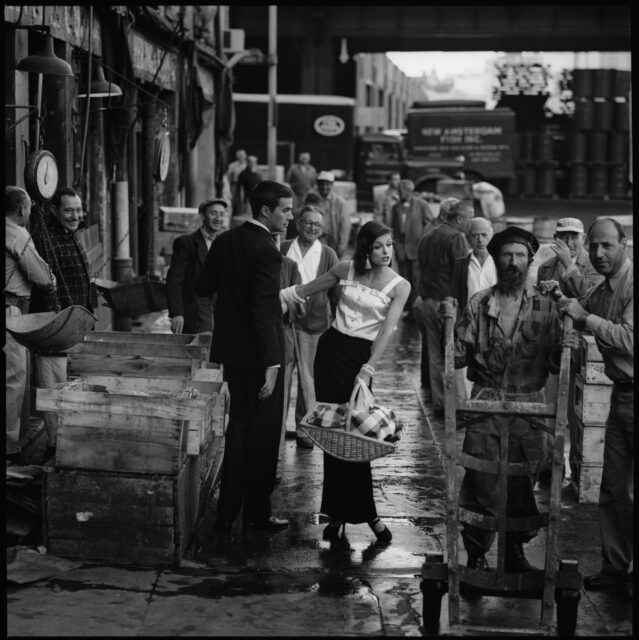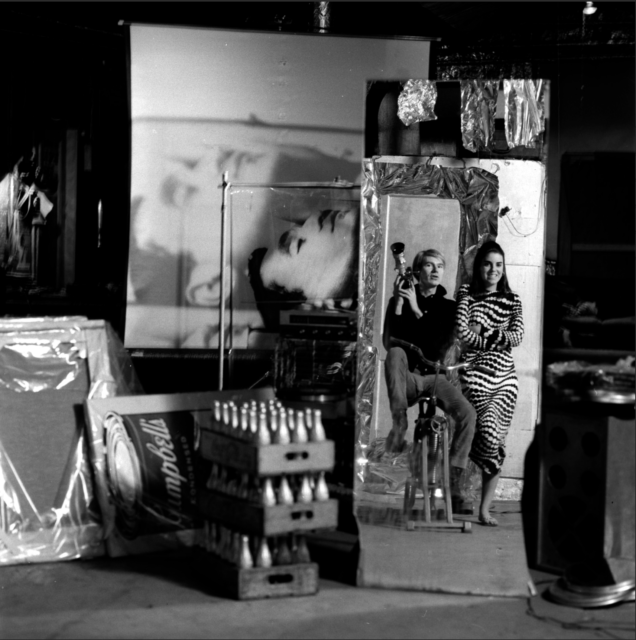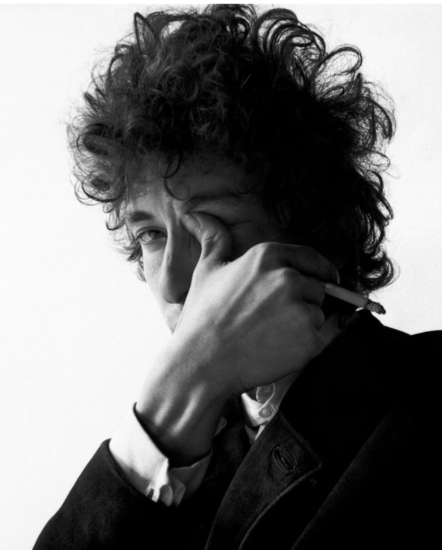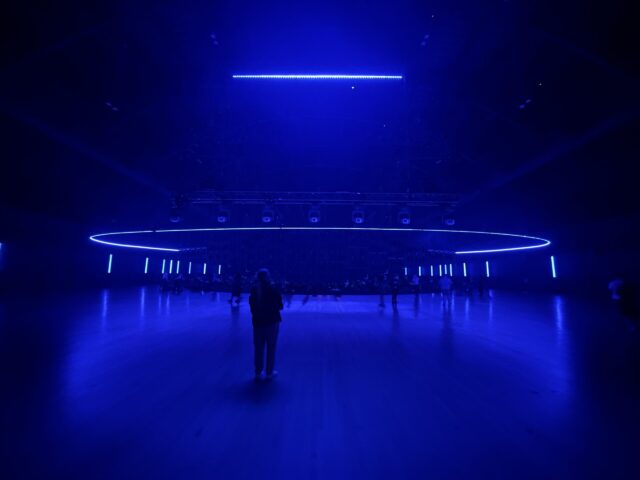
Karlheinz Stockhausen’s Inside Light is a multimedia marvel at Park Ave. Armory (photo by twi-ny/mdr)
INSIDE LIGHT
Park Avenue Armory, Wade Thompson Drill Hall
643 Park Ave. at 67th St.
Friday, June 14, $70, 6:30
212-933-5812
www.armoryonpark.org
online slideshow
“I hope that the future will bring us auditoriums with permanent technical installations where we can listen to music like Weltraum as often as we like — including the individual layers, sounds, and tones in listening seminars,” Karlheinz Stockhausen wrote in the program notes for his 141-minute 1992 Weltraum (Outer Space). “Listeners may perceive every sound from beginning to end, experience every movement and maintain their concentration.”
While it might not be permanent, the experimental German composer has found a home at Park Ave. Armory, where his work has been staged to dramatic impact. In 2012, the New York Philharmonic performed Stockhausen’s tri-orchestral Gruppen (Groups), with 109 musicians divided into three ensembles. In 2013, the armory presented Oktophonie, a sixty-nine-minute layer from Act II of Dienstag aus Licht, the Tuesday portion of his 1977–2003 twenty-nine-hour opera cycle Licht: The Seven Days of the Week, set in an immersive environment created by Thai contemporary artist Rirkrit Tiravanija.
The legacy of Stockhausen, who died in 2007 at the age of seventy-nine, is now being celebrated at the armory with the meditative and mesmerizing Inside Light, comprising five sections over nearly six hours; although it ostensibly relates the story of Eve, the archangel Michael, and Lucifer, don’t search too hard for a narrative. Conceived by armory artistic director Pierre Audi, the multimedia extravaganza takes place in a huge oval at the center of the massive Wade Thompson Drill Hall, where audience members can use BackJack chairs or spread out on the floor; try not to get too settled in, as it’s strongly advised that you occasionally walk inside and outside the space to enhance the experience, moving your chair as different segments unfold and even listening from the hallway.
The stunning installation, by Urs Schönebaum, whose previous breathtaking lighting at the armory includes Claus Guth’s Doppelganger and William Kentridge’s The Head & the Load, features a large screen hanging at the west end, constructed of eleven connected pieces that increase in height from the edges to the center; at the east end are five vertically oriented screens of slightly different widths, separated by critical negative space. A thin, oval strip of light encircles the area, and some two dozen ceiling lights are arranged in a wide spiral, surrounded by speakers. The enveloping, prerecorded sound design, from basset-horns and keyboards to wind, ocean waves, and ominous laughter that wash over the audience, is by musician and longtime Stockhausen collaborator Kathinka Pasveer, with expert engineering by Reinhard Klose.
The droning, contemplative music is accompanied by hit-or-miss video projections by Robi Voigt. Hypnotic black, white, and gray grids shimmer, evoking Sol LeWitt and Tetrus, while a misty green is haunting. (I advise staring at the white and gray grids, then shutting your eyes quickly to see the reverse images in the darkness.) Reddish-orange abstract shapes are less interesting, moving like mathematical fractals. Feel free to close your eyes and just listen, or get up and walk around when the visuals fail to engage. However, Schönebaum’s lighting is spectacular, as beams of white, red, blue, and green intersect across the vast space, spots shine down on the floor, a planetlike object emits at times nearly blinding dullish color, and an empty square of white lights hovers above like a UFO about to beam up audience members.
Inside Light can be experienced in two parts, the first consisting of Montags-Gruss (Monday Greeting and Eve Greeting), Unsichtbare Chöre from Donnerstag (Invisible Choirs from Thursday), and Mittwochs-Gruss (Wednesday Greeting), the second Freitags-Gruss (Friday Greeting) and Freitags-Abschied (Friday Farewell), but it’s best experienced in one full marathon, which I saw on June 8 and is being repeated June 14, beginning at 6:30 pm, with a one-hour dinner break. Be sure to check out the Mary Divver Room, where you’ll encounter some of the inspiration for Voigt’s videos.
As previously noted, don’t stay glued to your seat; get up, turn your chair around, walk across the space, and let the music guide you. However, watch out for a transformative moment when the horizontal screen, displaying a black-and-white grid, appears to start moving into itself, something I won’t soon forget.
[Mark Rifkin is a Brooklyn-born, Manhattan-based writer and editor; you can follow him on Substack here.]


